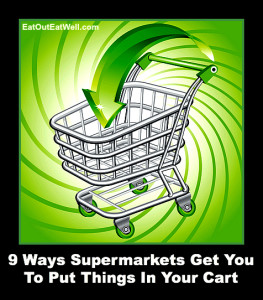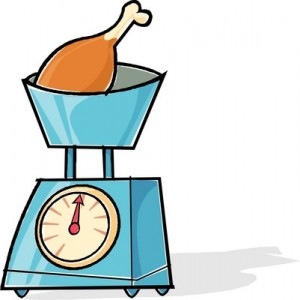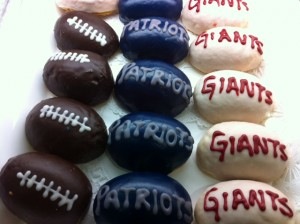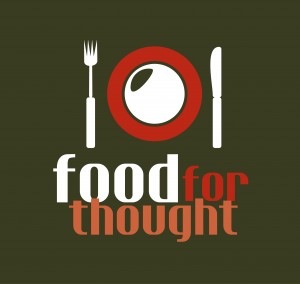
Supermarkets have your shopping experience down to a science. They arrange and display their merchandise in ways that encourage you to buy both more products and the type or brand of product that they want to sell. Here are 9 ways they get you to put more items into your cart which ultimately means more items scanned at the register.
1. Is the product on a high, middle, or low shelf?
Have you ever heard something described as “top shelf”? That usually refers to really good, or “top flight” (expensive) stuff. In supermarkets, the location of where products are placed sends subtle signals that are designed to affect your purchase decisions. The most expensive products generally are on the highest or top shelves. Lower shelves house “destination” products — the ones you need, look for, and will buy regardless of price. The bottom shelf has the least popular or generic products (where’s the flour and sugar in your market?). Eye level shelves, known as “reach,” (reach out your arm) hold high impulse purchases, products that are competitive, or ones that are the most enticing.
2. What does the market want you to buy?
Supermarkets are filled with free-standing bins and shelves and with end caps — the shelves at the very end of aisles in the market. There seem to be so many that you’re in danger of knocking into them with your cart as you try to get from one aisle to another. But, the crowding and the obvious placement means that you’ll usually end up checking them out for specialties or bargains. The products on or in them are either promoted products that have a high profit margin for the store, are marked with a very low price, or carry a manufacturer’s promotion like a coupon or reduced price. “Dump bins” or “offer bins” usually are a jumble of items being closed-out and seem to uniformly signal “cheap price.” Can you easily walk by big bins or specialty displays without at least looking?
3. Do you see a colorful mosaic of fruit and vegetables?
In produce departments, the displays of green vegetables are usually alternated with brightly colored produce. The mosaic of beautifully colored fruits and vegetables is designed to draw your eye. For instance, when you walk into Whole Foods, you’re instantly hit with what they want you to see/buy/eat. Produce is right up front, arranged by shades of color, and artfully displayed in black bins so the produce color really stands out and draws your attention. According to a retail consultant, they’re priming you – giving you the impression that what you see is as fresh as possible – that way you’re prepared to spend more.
4. Why are eggs and milk located in the back of the store?
We all go to the supermarket to buy lots of things – but most frequently the market is a destination for things like milk, eggs, and bread. In many markets those destination purchases are in the farthest corner of the store. The more items you have to walk by to get to your destination purchase – milk, bread, eggs — the more opportunities you have to buy other things you walk by that suddenly you absolutely must have.
5. Why are batteries and magazines near the cash register?
Have you noticed that impulse purchases like magazines, gum, and candy, and even batteries and seasonal items like sunscreen, are near the cash register (even though you can also find them elsewhere in the store)? While you wait to pay, the displayed items or things that are impulsive buys (gee, I might need more AA batteries), may entice you to toss one or two items onto the checkout counter. Of course the low level – or kid in cart-level — displays also entice kids to grab candy from them and more often than not, to avoid a scene, parents give in and that chocolate bar gets rung up, too.
6. Is there a café or coffee bar in the front of the store?
Some markets now have cafes, coffee bars, or places to sit and eat the food you have purchased. In many Whole Foods Markets the eating areas are very near the entrance. A branding design expert says the intent is to get you in the mood for shopping. As soon as you walk in and you see other people enjoying the products that you can buy and then eat, it gives you incentive to purchase and eat them, too.
7. How large is your shopping cart?
How big are some of the shopping carts – especially in the bigger or newer stores where there are nice wide aisles? Or, how about the stores with kid sized carts, too? You end up filling – and buying – an adult sized (perhaps oversized) cart’s worth of groceries and a kid-sized cart of groceries, too. How many adults can tell a child that they aren’t going to buy what the child has put into his or her own cart? A retail consultant’s firm calculated that by increasing the size its shopping baskets a store can boost its revenue by up to 40% — the reason that over the past three years Whole foods has increased the size of its shopping baskets.
8. Do you hear music In the air – and not just through your ear buds?
From a branding design expert: hearing old favorite songs while you shop in a store helps you form a quick emotional bond with the store and you feel that the store “gets you.” In Whole Foods you very likely might hear hits from the ‘80s and ‘90s. Don’t you have a tendency to buy more when you’re relaxed and in a comfortable atmosphere?
9. What color are the price stickers?
The color of the sales stickers on your merchandise, especially in bigger stores, is not just a random choice. Here’s why: yellow and red signs and stickers elicit the biggest consumer response. Heads up – especially when you see a nice red or yellow sale sticker stuck on something – it might be destined to end up in your cart!



